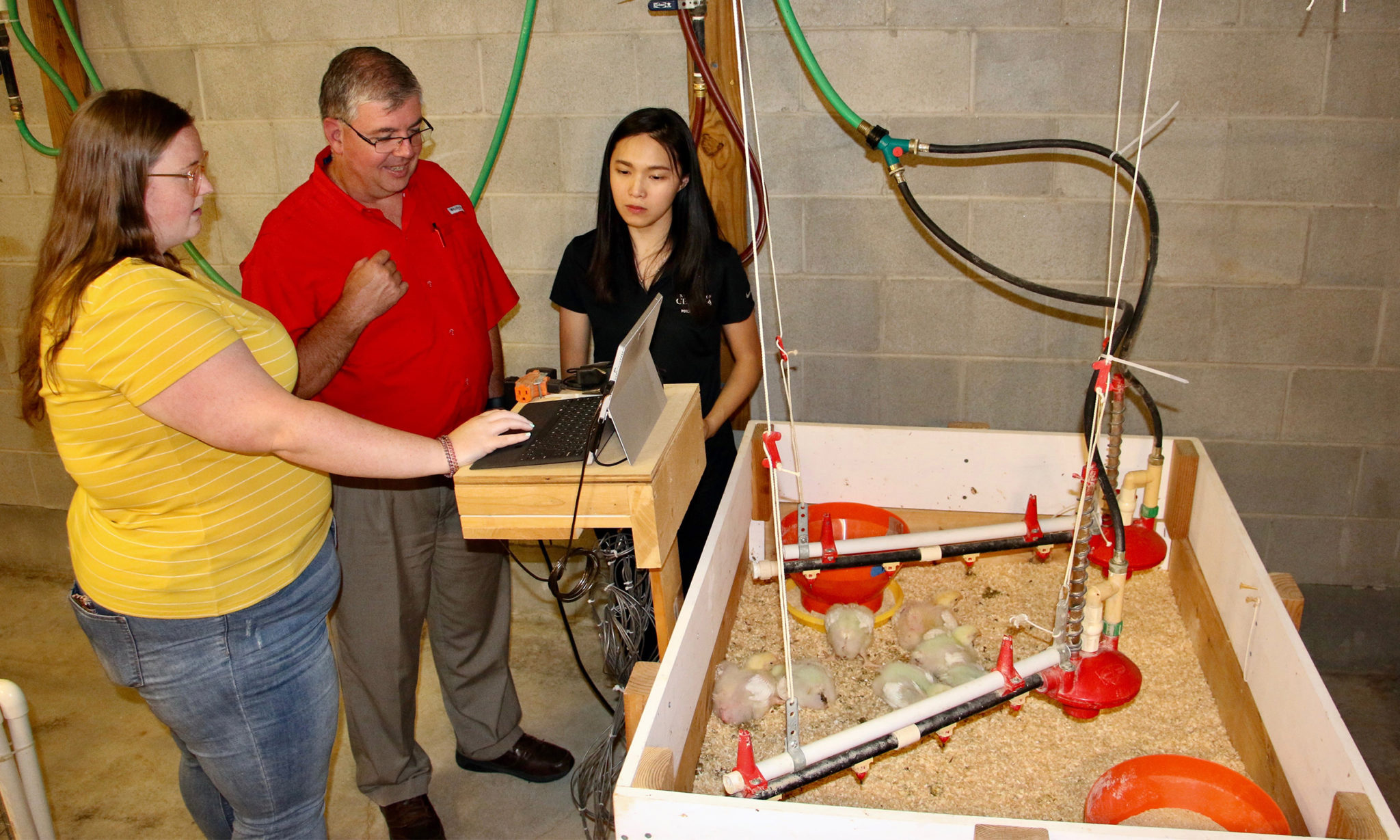



Using microchips to improve bird health on poultry farms
A new innovation can help determine how changes in poultry house environment and management affect bird comfortA new innovation from University of Georgia poultry researchers may provide a more efficient and effective method of determining how changes in poultry house environment and management affect bird comfort.

Brian Fairchild and Michael Czarick (BSAE – Agricultural Engineering, ’83; MS – Agricultural Engineering, ’87) — faculty members in the Department of Poultry Science at the UGA College of Agricultural and Environmental Sciences (CAES) — focus on applied research into physiological management of poultry, poultry house environmental control and energy conservation to try to lower Georgia poultry producers’ production costs while improving the performance, health and comfort of birds.
Tracking real-time temperatures
One piece of technology that Czarick and Fairchild’s team are investigating is a radio-frequency identification (RFID) chip that is inserted under the birds’ skin, similar to those used to help identify a family pet if lost. This technology allows researchers to monitor birds’ temperatures in real time to continuously determine their level of thermal comfort.
“We monitor body temperature by inserting an RFID chip under the skin of the birds, then we have an antennae system set up in their pens so anytime they walk by the antenna it reads their body temperature,” said Kristin Miles, a graduate student on the research team. “This allows birds to, in a sense, communicate directly with us to let us know if they are getting too warm or cold. We can change different aspects within the birds’ environment — temperature, air speed, humidity — and the birds can provide us direct feedback as to whether the change was beneficial or detrimental.”
Birds, like mammals, are homeothermic, producing heat to maintain a relatively constant body temperature. A 5-pound broiler chicken will produce more than 50 BTUs of heat per hour. A British thermal unit (BTU) is the amount of heat required to raise the temperature of 1 pound of water by 1 degree. With the typical capacity of a broiler house at 20,000 5-pound birds, that averages out to birds producing 1 million BTUs of heat per hour.
Normally, a chicken’s body temperature is 104 to 107 degrees Fahrenheit, but that will fluctuate somewhat depending upon the environmental temperature. In cold weather, a chicken’s body temperature can drop as low as 73 degrees before death occurs. However, there is much less flexibility on the high side, with body temperatures of 113 to 117 degrees becoming lethal to birds.
Automating systems to reduce heat stress
Isabel Luo, a graduate student who is using the technology in her research involving chicks said, “In the past, I would have to pick up the chick and measure its temperature manually, which was time-consuming and potentially stressful for the chick. With the RFID chips, I am able to measure an individual chick’s body temperature thousands of times a day, which provides me with incredibly accurate data — and the chick doesn’t even know I am doing it.”
RFID technology has been used to explore a number of questions commonly asked by poultry producers, including how air movement affects the body temperature of newly hatched chicks, whether cold drinking water reduces the temperature of young chicks, if chicks’ temperature varies based on size or the age of the layer hen, how chick temperature varies over the course of the day and how chick temperature varies in the first week of its life.
The team is now developing a portable system to monitor bird temperature in poultry houses and not just in the laboratory.
“This technology has so many real-world applications that we have just begun to explore. We no longer have to guess how the environment or management practices affect the birds’ level of thermal comfort — we can measure it directly. This will not only help us to maximize bird performance and health, but improve bird welfare as well,” Czarick said.
The system being developed by Fairchild and Czarick’s team could prove effective for both young chicks and older birds, as chicks are more sensitive to cold and older broilers are more sensitive to heat.

Fairchild and Czarick have been working together on research and Extension programs in the area of poultry house environmental control for 20 years. Their work over the years has helped maintain poultry house environments while conserving energy and maintaining environments conducive to good bird welfare.
“A lot of the work that we do together is evaluating new equipment and new technology to implement in poultry houses to improve the environment for the birds, while at the same time trying to reduce grower operating costs,” Fairchild said.
As the nation’s leading poultry-producing state, Georgia’s poultry industry represents more than 50% of the state’s agricultural income. To meet the demand for innovation in poultry production, UGA is building a new Poultry Science Building to better equip faculty and students, the nation’s poultry industry and Georgia communities.
To learn more about other areas where CAES is advancing agricultural innovation, check out “Innovating the South’s precision agriculture technology.”








